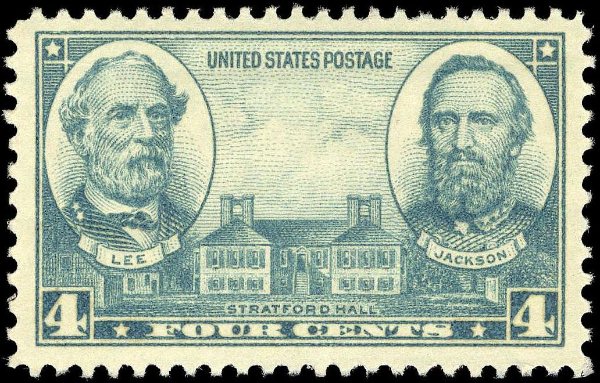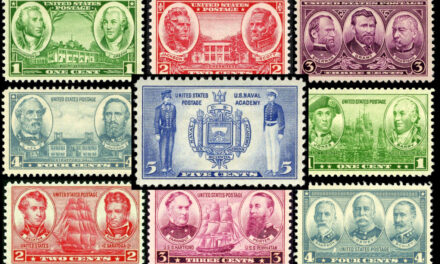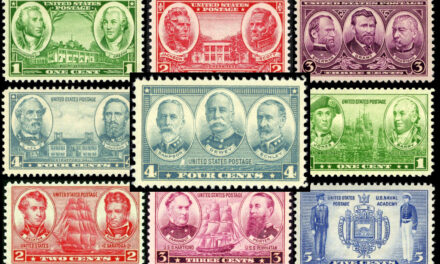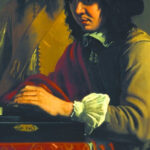
1-Cent 1936 Army Stamp: George Washington, Nathanael Greene, and Mount Vernon
Revolutionary War Generals George Washington and Nathanael Greene were honored on the 1-cent 1937 Army stamp issued by the United States Post Office in 1936. The stamp also shows a view of Mount Vernon, Washington’s Virginia estate.
The stamp is the first in a series of five stamps that were issued between December 1936 and May 1937 to commemorate some of the most important American Army officers of the 18th and 19th centuries. A corresponding series of Navy commemoratives, including the 1-cent Navy stamp featuring John Paul Jones and John Barry, was issued on the same dates as the Army stamps.
The Design and Issuance of the 1-Cent 1936 Army Stamp

The 1-cent 1936 Army stamp features Generals George Washington and Nathanael Greene and a view of Mount Vernon. (U.S. Post Office — U.S. Bureau of Engraving and Printing, Public domain, via Wikimedia Commons)
The Other Stamps in the 1936–1937 Army Series
General George Washington (1732–1799)
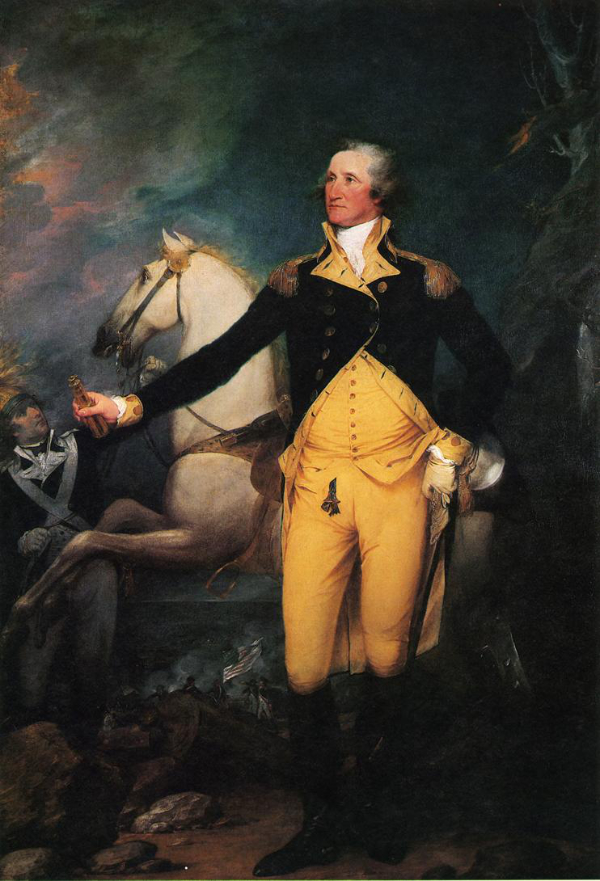
'General George Washington Before the Battle of Trenton,' by John Trumbull. (Courtesy of the Yale University Art Gallery, Public domain, via Wikimedia Commons)
George Washington, the first President of the United States of America, is honored on this stamp for his role as Commander in Chief of the Continental Army in the American Revolutionary War from 1775 to 1783. Washington had developed his military skills in the French and Indian War, and he earned great respect for his courage and leadership.
When the American colonies went to war in 1775, the Second Continental Congress appointed Washington Major General and Commander in Chief of the army.
Washington’s first success in the war was forcing the British to abandon the siege of Boston. Despite numerous setbacks, his strategic leadership culminated in 1781 with the successful siege of Yorktown, Virginia, and the surrender of the British, leading to the Treaty of Paris ending the war in 1783.
Washington resigned his commission in December 1783. In 1789, he was elected President of the United States. He served two terms and left office in 1797.
Major General Nathanael Greene (1742–1786)
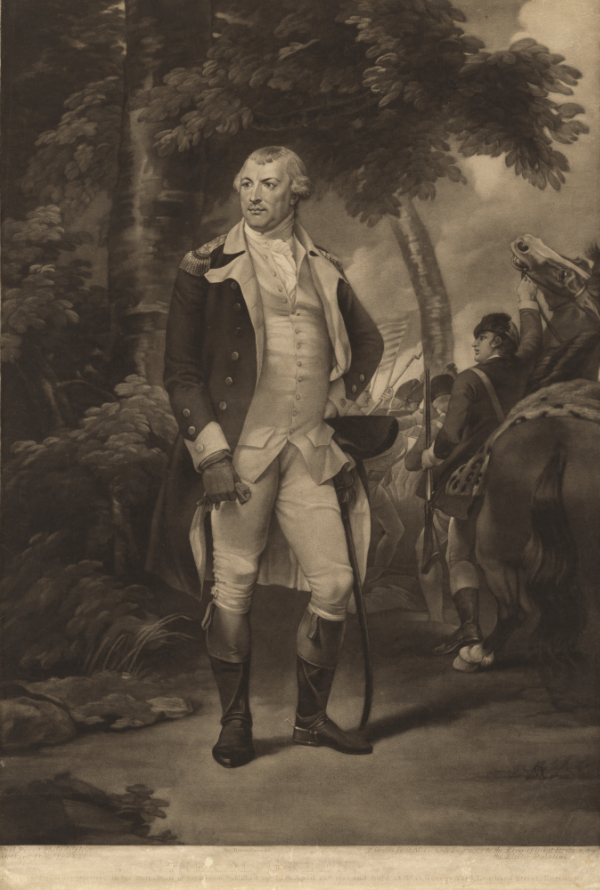
Nathanael Greene, by Valentine Green, after Charles Wilson Peale. (National Portrait Gallery, Smithsonian Institution, Public domain)
Although he was born into a pacifist Quaker family in Rhode Island, Greene developed a strong interest in military tactics and helped organize a militia in 1774. Advancing rapidly, he was promoted from private to Brigadier General in 1775 and put in command of the city of Boston after the British evacuated it in 1776.
Later in the same year, Greene was promoted to Major General and given command of the Continental Army troops on Long Island. In 1778, he accepted Washington’s request to serve in the difficult post of Quartermaster General at Valley Forge.
In 1780, after the Continental Army had suffered several major defeats in the South, Washington chose Greene to take command of the southern army. Once Greene took over, the tide of the war in the South changed and, due largely to Greene’s strategic brilliance, the British were defeated.
Mount Vernon: George Washington's Plantation Estate
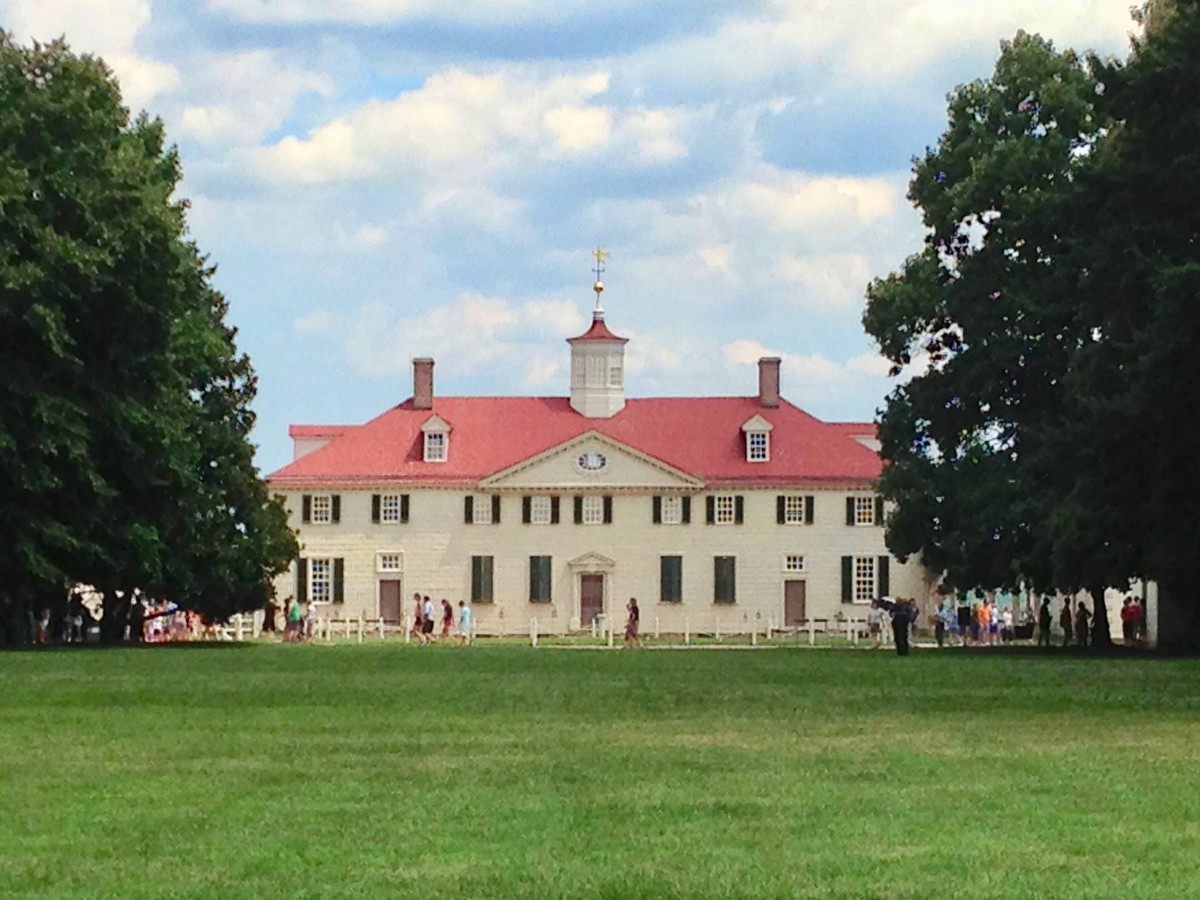
George Washington's estate at Mount Vernon in Virginia. (Photo by Brian Lokker)
In addition to the portraits of Washington and Greene, the 1-cent 1936 Army stamp also features an engraving of Washington’s mansion at Mount Vernon in Virginia.
George and Martha Washington’s plantation estate on the banks of the Potomac River had been in Washington’s family since 1674. George’s half-brother Lawrence Washington had named it Mount Vernon in honor of Vice Admiral Edward Vernon of the British Navy, Lawrence’s commanding officer in the War of Jenkins’ Ear.
After Lawrence died prematurely, George inherited the estate. He enlarged and improved the house and added substantial acreage to the plantation. He grew numerous crops, bred sheep, and built a distillery on the property.
The property was not maintained after Washington’s death in 1799, but in 1858 the nonprofit Mount Vernon Ladies’ Association purchased the estate and in the ensuing years restored the mansion and grounds. Mount Vernon was designated as a National Historic Landmark in 1960 and today is the most popular historic estate in America.
Situated along the Potomac River in Northern Virginia, Mount Vernon is just 16 miles south of Washington, D.C. It is open to visitors 365 days per year, including holidays. To learn more about Mount Vernon and get information about visiting, see the Mount Vernon website.
A Window into American History
As heroes of the American War of Independence, Generals George Washington and Nathanael Greene were obvious choices to be honored on the first stamp in the 1936–1937 series of Army commemoratives.
This 1-cent stamp and the others in the series provide a quick introduction to important figures, events, and places in American history. Collecting stamps, especially commemorative issues, can be a great way for people of any age to learn about history. Hundreds of commemorative postage stamps have been issued by the United States alone, and thousands of stamps that tell interesting stories have been issued worldwide.
Copyright © Brian Lokker 2011, 2024. An earlier version of this article was published on HubPages.com in 2011 and was subsequently featured on HobbyLark.com.



